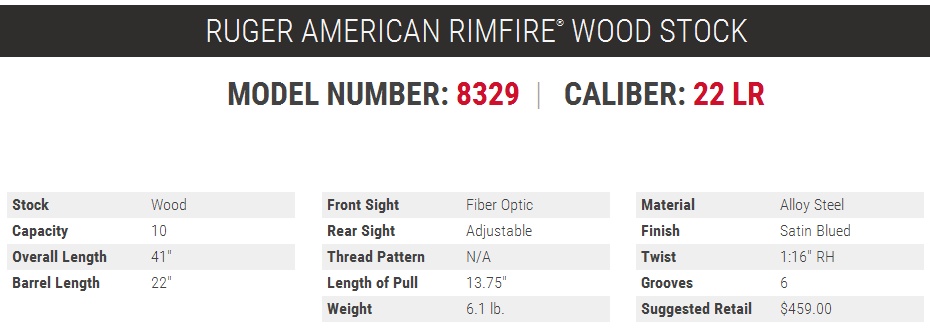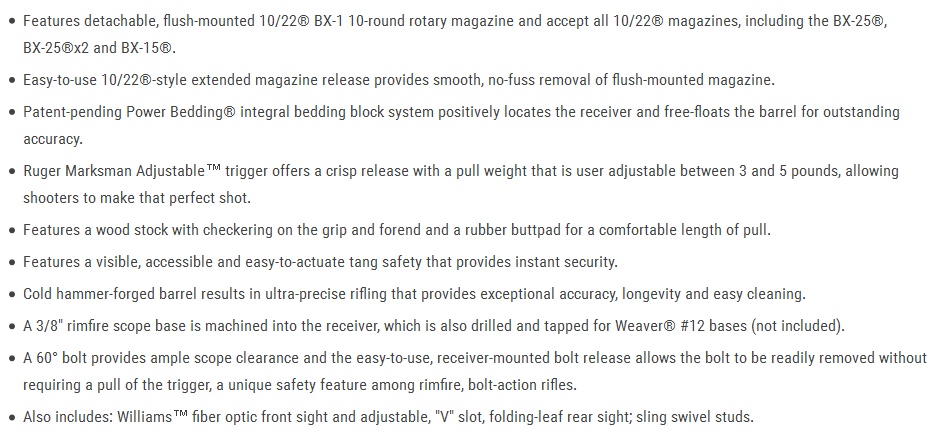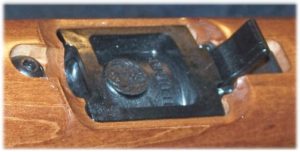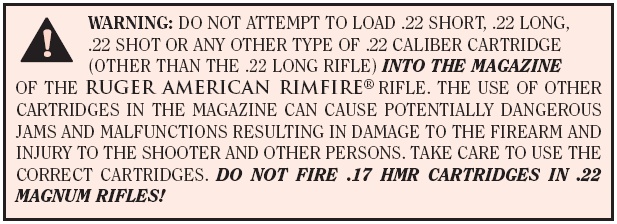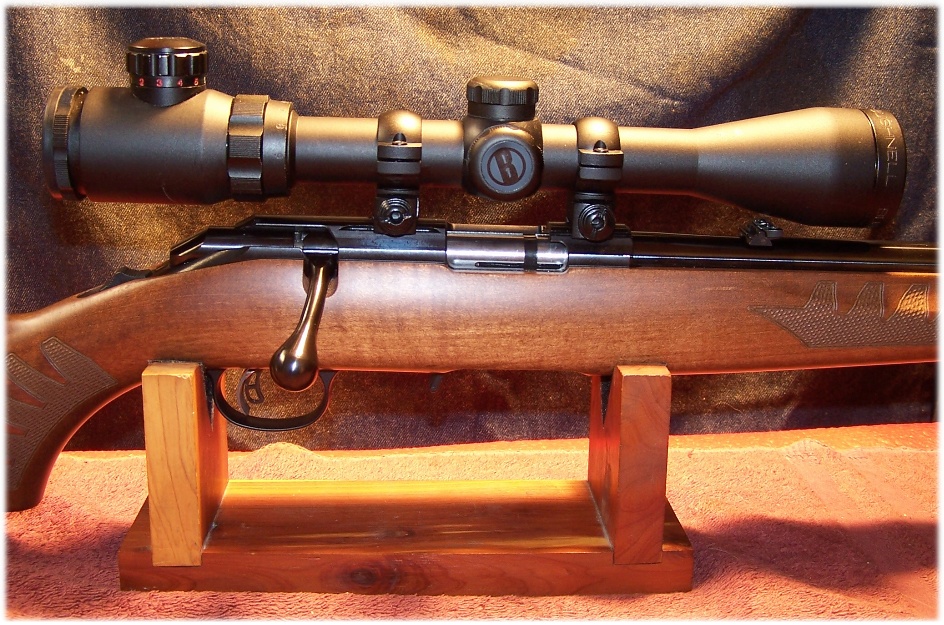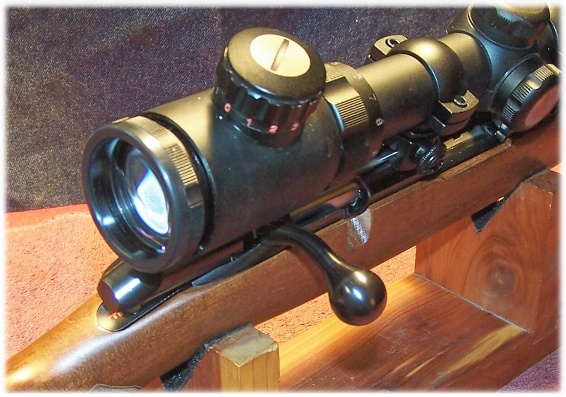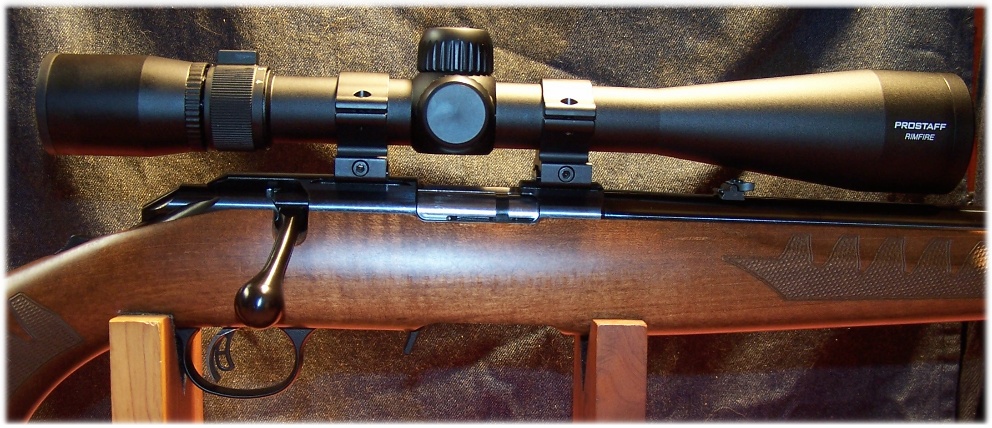Like some, I have several .22 LR lever, bolt, pump, and semi-automatic rifles in the collection. With few exceptions, the furniture on these rifles is polymer. While polymer furniture has good qualities, one of those qualities is not “warmth” or “character”. There is nothing like a well-cared for wood stock; the smell and feel of even a poor wood stock example is better than the cold, soulless, feel of polymer – regardless of how much you dress it up with patterns and colors.
When my mind was echoing to the body the need for a good bolt-action rifle in the “double-deuce” caliber, the search was on for a good rifle-for-the-money. There was one caveat, however. I did not need more magazines of vryi9ng types to fit varying rifles. I wanted a rifle that would use a magazine that was usable in other rifles. With that said, nearly all rifle manufacturers have proprietary magazines for their rifles and which are specific to those rifles. There is only one manufacturer, as far as I am aware of, that incorporates a magazine into the design of a rifle that can also be used in other rifles – Sturm Ruger and Company, Inc. Specifically, the rimfire line of rifles by Ruger. The problem would not be in finding a bolt-action rifle in the “double-deuce” caliber, but in finding a bolt-action rifle with wood furniture. Ruger saw me coming.
With the Ruger M77 line now down to a single .22 LR product, and that product sporting polymer furniture, the Ruger American was the only option left to me. But, was it a good option? Would I have to force myself to go to a European manufacturer to get a quality “double-deuce” rifle like CZ USA or Anschultz? I would rather buy American whenever possible, of course, but sometimes that option is not available to us. Luckily, and with Ruger, the option of buying a quality rifle with wood furniture is entirely possible.
Enter the Ruger American Rimfire® Wood Stock (8329) 22LR.
THE BASICS:
THE LOCK:
The Ruger American Rimfire® Wood Stock (8329) 22LR comes with the Ruger Marksman Adjustable™ trigger, which offers a crisp release with a user adjustable pull weight that is between 3 and 5 pounds. With an adjustable trigger in mind, please consider that to adjust the trigger pull weight, the barrel and receiver assembly must be removed from the stock. The receiver is held to the bedding with mounting screws that are tightened to 35-foot pounds of torque in increments. Personally, I would accept a somewhat heavy trigger rather than possibly affecting accuracy by removing the receiver just to do a DYI trigger adjustment. The trigger pull weight on my Ruger American Rimfire is 3.5 pounds new and it will smooth out with use. I see no virtue in pulling the action for an ounce or two of pull. But, if you are serious about getting the lightest trigger possible, I highly recommend that a qualified gun smith do the work.
Just forward of the trigger guard is an easy-to-use 10/22®-style extended magazine release that provides smooth, no-fuss removal of magazines – flush-mounted or otherwise.
One key feature that drew me to the Ruger American Rimfire (8329) 22LR is the detachable, flush-mounted 10/22® BX-1 10-round rotary magazine. The Ruger American Rimfire (8329) 22LR also accept alls 10/22® magazines, including the BX-25®, BX-25®x2 and BX-15®. This means that I can use the same magazines in my 10/22 carbine and the Ruger “Charger” pistol.
Another feature of the action that is nice to have in a rimfire rifle is that the Ruger American Rimfire 22LR can be dry-fired safely and without damaging the firing pin or the breach-face.
THE STOCK:
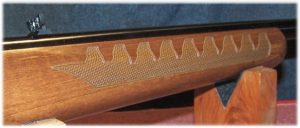 The Ruger American Rimfire (8329) 22LR features a single-piece wood stock with laser-etched “feathering” incorporated on the grip and forend. I say “featherings” because the pattern reminds me of a windswept prairie fire or the feathers of an Indian war bonnet.
The Ruger American Rimfire (8329) 22LR features a single-piece wood stock with laser-etched “feathering” incorporated on the grip and forend. I say “featherings” because the pattern reminds me of a windswept prairie fire or the feathers of an Indian war bonnet.
The 13.75-inch LOP is nearly perfect for me with my long reach. A rubber butt-pad makes for a comfortable length of pull and for soaking up the horrendous recoil of the .22 long-rifle cartridge.
The hand nestles into the almost pistol-like grip curve. The trigger, bolt, and tang-mounted safety are all within reach of the shooting hand.
Within the belly of the stock is a patent-pending Power Bedding® integral bedding block system that positively locates the receiver and free-floats the barrel.
A slight rise to the comb of the stock that is formed level to the heel of the stock. There is something that calms the nerves when the cheek contacts wood.
THE BARREL:
The 22-inch cold, satin-blued hammer-forged barrel results in ultra-precise rifling that provides exceptional accuracy, longevity and easy cleaning. A target-crown prevents damage to the all-important muzzle end of the barrel.
As was mentioned previously, the barrel is bedded and is free-floating.
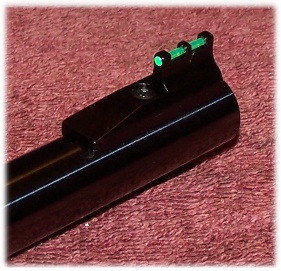 At the front of the barrel sits a Williams™ fiber optic front sight that overseas the target-crown muzzle of the barrel. What is interesting to note is that the front sight appears to be the same front sight as used on select Ruger pistols – like the new Ruger MKIV “Hunter” pistol. So far, this type of sight has been the best for me to actually see in the poor lighting of the indoor range that I frequent.
At the front of the barrel sits a Williams™ fiber optic front sight that overseas the target-crown muzzle of the barrel. What is interesting to note is that the front sight appears to be the same front sight as used on select Ruger pistols – like the new Ruger MKIV “Hunter” pistol. So far, this type of sight has been the best for me to actually see in the poor lighting of the indoor range that I frequent.
At mid-barrel we find the adjustable, “V” slot, folding-leaf rear sight. The folding leaf rear sight is adjustable for elevation. The slide must be moved one graduation to change the point of impact by approximately one inch at 25yards. Use a small screwdriver with a blade tip that exactly fits the screw-head. Loosen the screws only slightly so the slide doesn’t move too freely. Move the slide in the direction you want the point of impact of the bullet to move. When the slide is positioned at the desired height, carefully tighten both screws. Lateral (windage) adjustment is made by ‘drifting’ the sight base in its slot. Place a short brass rod against the sight base (and only the base) and tap the sight in the direction you wish to move the point of bullet impact. Before moving the sight, pencil mark an index line on the sight base and rib so that sight movement can be detected. Note that the rear sight blade can be reversed to give a square notch rear sight picture.
The receiver is drilled and tapped for Weaver #12 bases, but a 3/8″ rimfire scope base is machined into the receiver.
60° bolt provides ample scope clearance and an easy-to-use, receiver-mounted bolt release allows the bolt to be readily removed without requiring a pull of the trigger, a unique safety feature among rimfire, bolt-action rifles.
Moving on, I did find some roughness within bolt housing itself. There are circular machining marks where, I felt, should be smooth. This is a CNC process and I expect better work than this, Ruger.
Also, the cuts in the bolt housing for the bolt handle where the bolt slides into the bolt housing are not smoothly finished; I can definitely see the wearing of the finish at these edges. The edges are sharply defined where a rounding of these edges would be better.
I realize that the Ruger American Rimfire is not an Anschultz, or even a CZ, but c’mon Ruger – you could have done better!
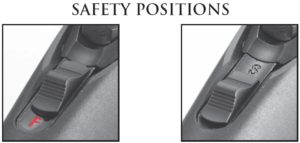 Moving rearward is the visible, accessible and easy-to-actuate tang safety. The tang safety is integral to the pistol grip of the stock. The safety is a two-position tang safety. The safety selector is located behind the rear bolt sleeve. The safety selector can be moved from the “Fire” position to the “Safe” position only when the firing pin is cocked. Fully raising the bolt handle cocks the firing pin.
Moving rearward is the visible, accessible and easy-to-actuate tang safety. The tang safety is integral to the pistol grip of the stock. The safety is a two-position tang safety. The safety selector is located behind the rear bolt sleeve. The safety selector can be moved from the “Fire” position to the “Safe” position only when the firing pin is cocked. Fully raising the bolt handle cocks the firing pin.

 I have to mention the bolt “angle-of-the-dangle” and how far the bolt handle extends from the stock. Some say that the handle extends to far from the stock and could be accidentally bumped with the shooting hand. Being accidentally bumped and disengaging the bolt is two different things. Let’s just say that disengaging the bolt takes some effort and any bolt, unless the safety locks the bolt, can be disengaged with a little effort. For me, the bolt distance from the stock allows me to slide the hand under the bolt handle just like I do with larger caliber bolt-guns – with the web of the hand, or the palm of the hand, and which is my right hand regardless of whether I am shooting left or right hand. Since I am a right-handed left-hand shooter of long guns, my right (strong) hand does all the manual labor when it comes to working the bolt or changing out a magazine. When I transport a bolt gun, the bolt is removed from the firearm and I don’t concern myself about if the rifle will fit in the darn carrying case. Some people just need something to whine about while they are eating their jeeze.
I have to mention the bolt “angle-of-the-dangle” and how far the bolt handle extends from the stock. Some say that the handle extends to far from the stock and could be accidentally bumped with the shooting hand. Being accidentally bumped and disengaging the bolt is two different things. Let’s just say that disengaging the bolt takes some effort and any bolt, unless the safety locks the bolt, can be disengaged with a little effort. For me, the bolt distance from the stock allows me to slide the hand under the bolt handle just like I do with larger caliber bolt-guns – with the web of the hand, or the palm of the hand, and which is my right hand regardless of whether I am shooting left or right hand. Since I am a right-handed left-hand shooter of long guns, my right (strong) hand does all the manual labor when it comes to working the bolt or changing out a magazine. When I transport a bolt gun, the bolt is removed from the firearm and I don’t concern myself about if the rifle will fit in the darn carrying case. Some people just need something to whine about while they are eating their jeeze.
The bolt is easily removed from the action with the push of a simple Bolt Release Button that is located on the left side of the receiver.
OVERALL VISUAL APPEAL:
 Ruger American Rimfire® Wood Stock (8329) 22LR has the classic lines of a wood-furniture rifle – an America-made wood-furniture rifle to be exact. The polymer versions of this rifle lack the flow, as the clean lines of the stock are broken with the modular stock options, in my opinion. While the polymer-stocked version says utility, the wood version says tradition, and to each their own says I.
Ruger American Rimfire® Wood Stock (8329) 22LR has the classic lines of a wood-furniture rifle – an America-made wood-furniture rifle to be exact. The polymer versions of this rifle lack the flow, as the clean lines of the stock are broken with the modular stock options, in my opinion. While the polymer-stocked version says utility, the wood version says tradition, and to each their own says I.
Everything on the wood-stocked version of this rifle makes for a harmonious blend of components.
The texturing of the forearm and grip lend a visual appeal to the rifle as they are not the usual checkering.
Overall, I find the Ruger American Rimfire 22LR with wood stock visually appealing.
OVERALL RANGE APPEAL:
Since the Federal Target Grade Performance ammunition (40-grain LRN @ 1200 fps) had performed so well in the Ruger MKIV target pistol, I decided to give it a run in the Ruger American Rimfire 22LR to establish zero. Then, I could play with some other selected ammunition.
I would be shooting at a NRA Official 50 ft. Slow Fire Pistol target at 25-yards distance while bench resting the rifle and using the open sights that came with the rifle. I really wanted some good performance out of the rifle, as I was not enthused about topping the rifle off with a magnified optic, although I knew that it was probably inevitable. Marksmanship first – always; “scope-doping” could come later.
The bolt operates smoothly, but with a slight hint of drag, and it is not going to be the quietest bolt to operate in the forest; in fact, it is quite noisy. The bolt sounds somewhat like a plastic zipper as it is moved throughout its range of motion. The noise seems to be caused by machining marks within the bolt housing itself.
The two-stage trigger is excellent for the intent of the rifle – hunting, plinking, target shooting, but lacks the preciseness of a good competition trigger. For the first stage, press the Trigger Release until you feel a “wall” and then press about 3.5 pounds more for the second stage of the trigger to send the bullet downrange. The break is as crisp as any 1911 trigger and no over-travel was detected.
It should be noted that the only purpose for the trigger is to release the firing pin. The sear is pulled away from the sear contact point with the firing pin, which allows the firing pin to move forward under extreme spring tension and strike the primer (rim) of the cartridge to be fired. In many ways, the operation is the same as striker-fired firearms, as there is no “hammer” per se.
Raising the bolt handle cocks the rifle. For this reason, Ruger recommends that the safety be placed in the “Safe” position before chambering a cartridge, or after chambering a cartridge, that will not be immediately fired.
Also, take heed of the following warning, provided by Ruger, with regard to ammunition.
And, no, Ruger magazines for the .22 magnum cartridge cannot be used in this rifle; they just will not fit regardless of any attempt to do so on your part.
I sent ten rounds of the Target Grade Performance ammunition (40-grain LRN @ 1200 fps) to the NRA Official 50 ft. Slow Fire Pistol target at 25-yards distance. Trying to see the font sight was a challenge enough let alone properly align it with the diamond of the rear sight. Nonetheless, I did manage too put all ten rounds on paper – just not where I wanted. The impact pattern was good in a vertical line, except that the line was not centered on the center of the target, it was to the right – by a large distance. There was some work to be done here. My Son-In-law shot the rifle and it was evident to both of us that the point of impact was high and right, although his right was more to center than mine.
Surprisingly, the CCI Blazer that performed poorly in the Ruger MKIV target pistol performed admirably in the Ruger American Rimfire 22LR. All in all, the different brands and weights of bullets fired performed about the same, as there was no distinct winner.
Looking at the rear sight, it was evident that the center-line of the adjustable elevation portion of the sight was about two lines high of the reference center-line. A quick adjustment of the rear sight (a Jeweler’s screwdriver is required) to bring the two center-line together brought the impact down to a reasonable enough impact point for me. Adjusting for windage; however, is another matter entirely. Unfortunately, I did not bring tools to drift the rear sight to the left and that had to wait until I returned home; the rear sight was definitely right-of-center (by measurement) and was quickly centered using the proper tools. Further sighting-in, and possible adjustment, would have to wait until the next range session.
I could not ask for a better trigger, with the exception of a gritty Trigger Release. I vowed to take care of that when I returned home, and a very light application of Ballistol on the Trigger Release mechanism took care of the issue.
Eventually, a scope will be mounted and I am sure that Ruger anticipates that most people will do just that. However, I feel it just as anticipatory that a user will actually use the open sights at some time or another, as I would if I had to remove the scope for some reason or if I actually liked the sights enough to use them, which I do when outdoors and in good light where I can actually see them. (Actually, I wanted to see how many times I could get away using the word “actually” – and it is actually several times.)
Although I wasn’t impressed by my performance, the Ruger American Rimfire 22LR is quite capable of giving the operator good accuracy with open sights and even better accuracy with magnified optics.
With a 13.75-inch LOP, some may find the stock too long for their liking and this rifle may fail in that category for a youth or person with short arms. I did feel that the comb of the rifle was slightly high, but with a scope mounted, it would be an advantage. The Ruger 10/22 might be to liking of some rather than the long stock of the Ruger American Rimfire. Or, rather than the wood stock Ruger American Rimfire option, you might consider the polymer stock options; the polymer stock option includes two interchangeable standard lengths of pull stock modules that provide comb height options for scope or iron sight use. By simply removing the rear sling swivel stud, stock modules can be changed in seconds.
I think that you would like the Ruger American Rimfire in 22LR or 22WMR once the rifle is dialed-in, with open-sights or with a mounted scope.
UPDATE 11/13/2016 – SCOPE DOPING:
Sometimes I can be a dope. In this case, I am a scope dope.
I had purchased a Bushnell rimfire scope at my local Wal-Mart to try on the Ruger American Rimfire. That was a bad decision on my part, but I was able to salvage some good out of the bad – maybe.
Range day did not go well! The cheap scope that I had bought for the Ruger American just did not cut it. The target, regardless of the distance, was blurrier than the reticle. I decided that I had to replace the scope with a better one; a Nikon or Simmons, maybe.
Well, I got back home and dismounted the Bushnell scope that was on the rifle, and then realized that I had another scope around here that I wasn’t using, and that I had purchased for something else, which didn’t work out.
Rings were exchanged, placed on the “new” scope, and now sits a Bushnell Banner 3-9×40 illuminated reticle scope on top of the American Rimfire. Granted that it is a little bit heavier than the Bushnell 22, and obviously larger – some may say too large.
There is plenty of space between the bolt handle and the rear lens housing and the center of the reticle can be illuminated red or green. There is also plenty of space between the exit lens housing and the barrel of the rifle. And, boy the target is as clear as anything – unlike the other scope. The eye relief is about 4-inches.
This scope is actually for larger calibers; .30-30 Winchester or .308; recoil should not be an issue the .22 LR. It has 60 MOA of total elevation and windage adjustment (finger adjusted after the caps are removed) w/ 1 click = 1/4 MOA at 100 yards.
It does have BDC, but I never use it with my relatively short-range shooting anyway.
Do you think that I over-scoped for a .22 LR rifle? See accompanying images.
UPDATE 12/06/2016:
The Ruger American Rimfire 22LR now sports a Nikon PROSTAFF Rimfire II 4-12×40 scope. The scope base and rings were ordered from Ruger and fit perfectly, as does the scope.
OVERALL IMPRESSION:
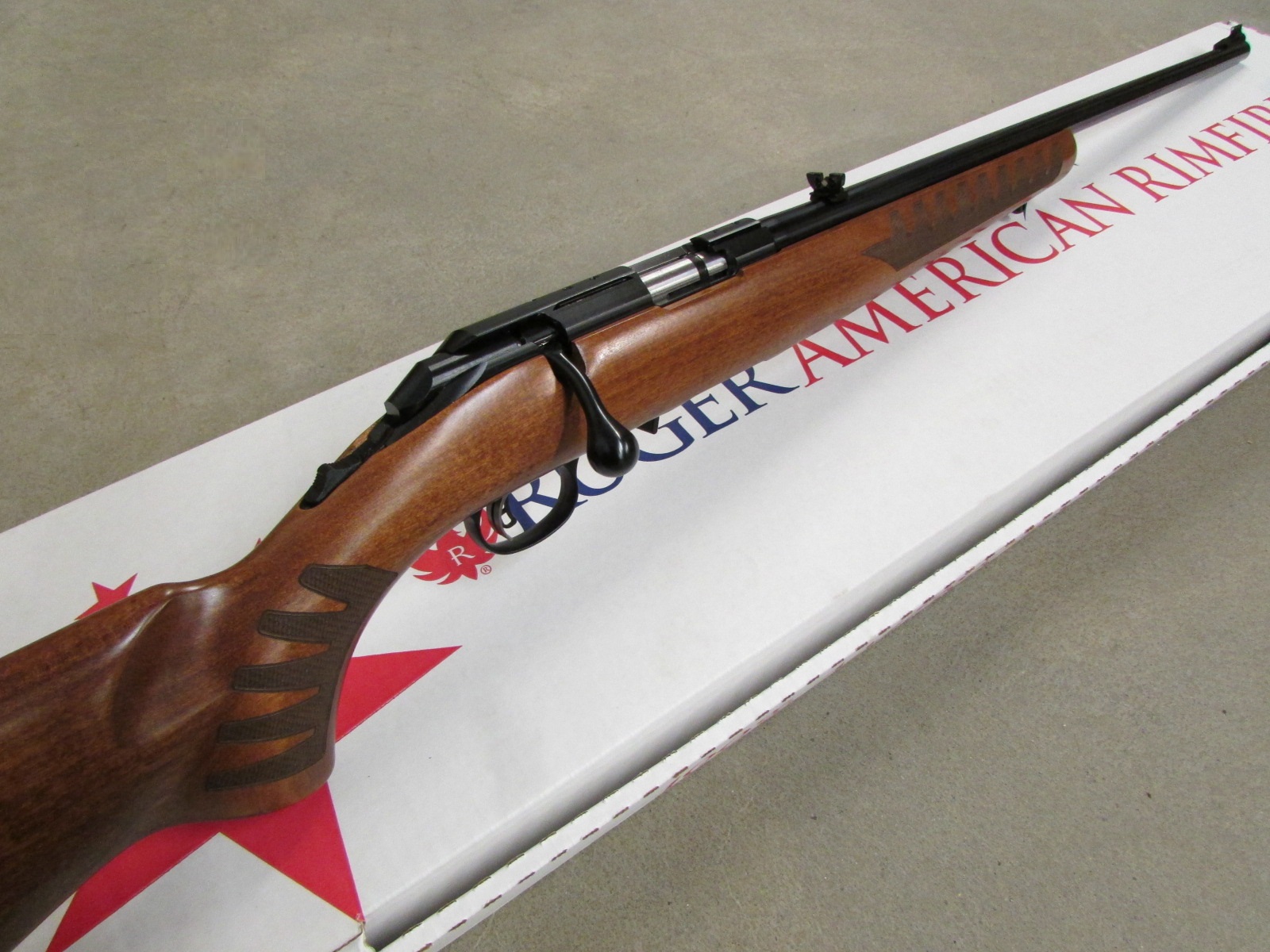 It should be noted that this version of the Ruger American Rimfire 22LR is the “long” version with its 20” barrel. There is also a “compact” version. Also, if you are not into wood, there is also the polymer-stocked version that provides adjustments for LOP and stock height.
It should be noted that this version of the Ruger American Rimfire 22LR is the “long” version with its 20” barrel. There is also a “compact” version. Also, if you are not into wood, there is also the polymer-stocked version that provides adjustments for LOP and stock height.
Ninety-nine point nine percent of the time, the firearms that I review are my personal firearms and I owe no company allegiance when reviewing their products. I invest time and good money and what I get for my money I report so that other fine people, like those reading this review, can decide if the product is worth their money.
The Ruger American Rimfire 22LR is considered, by some, as an entry-level rifle. The term “entry level” I am going to address in a separate article. As it is, the Ruger American Rimfire 22LR is an excellent general purpose bolt-action plinker, informal target shooter, or a bring-home-small-game rifle.
One advantage of a bolt-gun over a semi-automatic is that the bolt-gun tends to run cleaner. In a semi-automatic firearm, burnt powder and debris will naturally be forced into the chambering area due to the blow-back operation. With a bolt-operated firearm, burnt powder and debris is forced forward into the barrel and only a small residue of burnt powder and debris may be found in the chambering area due to operating the bolt.
While I did consider the CZ USA 452 Ultra Lux, I also had to consider cost of ownership and what I was intending to do with the rifle, and the Ruger American Rimfire 22LR won out.
Are there some issues with the Ruger American Rimfire 22LR? Yes they are and I would like to see Ruger pay more attention to their quality for those of us who really like Ruger products or for those who would really like to enjoy Ruger firearms. Sometimes, it is the little finishing touches that can make a difference to a consumer.
My final impression of the Ruger American Rimfire 22LR rifle with wood stock is of a utility rifle with traditional styling and furniture. I like the looks of the rifle, I like the feel of the rifle, and I like the way the rifle shoots – once it is properly sighted-in.
DON’ JUS’ TAKE MY WORD FOR IT:
Regardless if you are interested in the wood-stocked or a polymer-stocked version, you are primarily going to be interested in how the Ruger American Rimfire performs. In addition to my own findings, I have provided some links to others who can take you down that road.
Ruger American Rimfire Bolt-Action 22 LR Rifle: http://www.gunblast.com/Ruger-American22.htm
If anybody knows “double-deuce” rifles, it is 22plinkster:
RUGER AMERICAN RIMFIRE REVIEW: https://www.youtube.com/watch?v=tDuQewgO26E#t=26
And, here are some other reviews:
- Ruger 10/22 vs American Rimfire review: https://www.youtube.com/watch?v=KlOuFNWTfL8
- Ruger American Rimfire .22lr – First Impression: https://www.youtube.com/watch?v=f1stXjxONB0
- Ruger American Rimfire Review: https://www.youtube.com/watch?v=YXLAXrm89G8
RESOURCES:
Ruger American Rimfire: http://ruger.com/products/americanRimfire/overview.html
![]()



